Intro:
You're listening to The goHappy Frontline Experience, the podcast giving employers the insight they need on best practices to engage and communicate with their frontline workers. These workers are the go getters serving Americans around the clock. They are your servers, your drivers, your cooks, your cashiers and so many others. They are the heart and soul of every organization. And with goHappy, they now have a voice. In each episode, we will speak with industry leaders and experts on the best ways to capture that voice, learn from it and implement actionable plans to increase employee engagement. Thank you for joining us. And here are your hosts, Shawn Boyer and Dane Schwartz.
Dane Schwartz:
All right. Well, hello everyone. Thanks so much for listening in today. This our inaugural episode of the goHappy Podcast, and we're just super excited to have you all here with us and listening. And we're super excited to talk about who we are, what we're trying to build here at goHappy and what we really want to impact the change that we want to see in the industry. So we're super excited to have you here. My name's Dane Schwartz and I lead marketing here at goHappy. And I'm joined by the founder and CEO of goHappy, Shawn Boyer. Shawn and I are just pumped to be part of this and be talking to you guys. Today we just really want to talk about what we're trying to accomplish here, what we're doing with this podcast and explain a little bit more about what we mean when we say frontline engagement. Shawn, tell us a little about you. Who are you and what do you do here at goHappy?
Shawn Boyer:
Yeah, Dane, as you mentioned, Founder and CEO here at goHappy. By way of quick background, I started a company called Snagajob back in 2000. Prior to that, I was an attorney for a few years, which I hated, no offense to any attorneys out there. For me though, it just wasn't the right fit. So anyway, real quick on Snagajob just because it leads directly into goHappy is that the whole focus of Snagajob was to help employers be able to find frontline hourly employees, get them into the right fit position. And so as a two-sided marketplace, it's now the nation's largest marketplace for hourly workers, and ended up creating a whole suite of software around that. So we had an applicant tracking system, automated onboarding, et cetera, and did that for about 15 years. And we can talk more about that experience later, but it was a wonderful experience and just absolutely fell in love with frontline employees and the value that they provide to their organizations, to the economy as a whole. And so one of the things that we recognized there at Snagajob was that man, once somebody is hired, there's no way for these employers to be able to effectively communicate with them and to get feedback from them and so forth because they don't have company issued email. It's not like they're on Slack or Microsoft teams or whatever, but we had too many things on our plate already to be able to go to that pain point as well. But that's what then was the impetus for goHappy and going and starting that a couple of years ago. What I do here, that shifts every day I feel like and as we grow as an organization and new people come in, but I would say three things that I'd really try to focus on. One is being able to build a cohesive team, bringing in the right people and hopefully being a part of developing those people. The second thing is creating strategic clarity. It's all right gang, where are we headed? Why are we headed there? What does that translate into in terms of what we need to do this quarter, this month, this day? And then the third thing is just, okay, well what are those reinforcing practices then that we're hopefully doing every single week and day to drive all of those things home? And so at a high level, I kind of put them into those three buckets and then some really boring paperwork stuff.
Dane Schwartz:
Yeah. Right. All that stuff. Those are the fun things to fill your day with. Cool. Well, so again, my name's Dane Schwartz. I lead marketing here at Snagaaaaa. No. At goHappy. You said Snagajob.....
Shawn Boyer:
Once upon a time!!
Dane Schwartz:
Once upon a time, yeah! So actually is a good segue into the next portion here is talking about what's my background. I've worked for a number of technology companies doing marketing for them, brand marketing, product marketing, most recently had been at Snagajob, like Shawn mentioned that and led product and brand marketing there for a number of years and then did some consulting work and now here at goHappy and trying to spread the good word of what goHappy is and what goHappy brings to frontline workers as well as their employers.
Shawn Boyer:
Lucky enough for us.
Dane Schwartz:
No! Lucky enough for me!! For me! All right. Now that you guys kind of know who we are, let's talk a little bit more about why we're doing this. There's a number of different mediums to share information about an organization or share ideas and best practices and all of that. Let's talk a little bit more about why we are doing a podcast? I think, from my perspective, the idea of a podcast is just another medium for individuals to be able to be doing other things, let's say they're driving or something like that, commuting, they listen to what we have to say about this. And I think our passion is really being able to share the information that we've gathered from a frontline engagement standpoint, hear from industry experts, hear from some frontline workers maybe, and just having an opportunity to just share all that information in another way. What do you think?
Shawn Boyer:
Yeah, I don't know that I would have a whole lot to add to that. I agree with all of that. I think doing it via this medium a lot of times allows for more anecdotal kind of things were based on something somebody said who was a guest of ours, again, fortunate enough to hopefully be able to bring in, again, frontline hourly workers to hear directly from them, the awesome employers that we get to work with, industry experts that are focused on a particular field, maybe something they say spurs a question that we have that we can immediately follow up with a question of them to elicit more of a response there versus if it's just pure writing. Can do that too. Anyway, yeah. Really excited about this medium.
Dane Schwartz:
And I think one of the things I'd love to just touch on as well from a why perspective is why we think engagement, especially with the frontline, is just so critical and important and impactful both for the employee, for the frontline worker as well as for the employer. I would love to just hear your thoughts on what engagement means to you. And I think it ties in well with why you built this business as well, the value you saw there.
Shawn Boyer:
Yeah. Just in terms of a definition that I know we all love in terms of all right, well what does that mean? To me, a Great Place to Work Institute does a great job, and I'm paraphrasing it, but it's in essence when an employee feels that heightened emotional sense of connection so that it then drives this extra level of discretionary effort. And so that emotional connection piece is so key. And then obviously the benefit that the organizations derive from that is that they are putting forth that extra discretionary effort, that maybe an extra X percent to the bottom line because of that. And so that's how I think about the definition of engagement. In terms of why it's so important and probably more so now than it has been, you read the articles in recent history, go back several decades, even maybe more than that because of the incredibly hard time everybody's having to actually find the right people. You sure as heck don't want to lose people once you've spent whatever amount of money you have to get them there. And so to me, it goes back to our learnings at Snagajob, where again, people spend so much time and money trying to bring people in and you would see by the eighth day somebody is leaving already. It's like, "Wow, what in the heck happened? Were they just that bad? Did we do that bad of a job at vetting them?"
Dane Schwartz:
Or what didn't happen, right?
Shawn Boyer:
Right! Or what didn't happen? Yeah. And so the turnover rate in the industries that we serve is typically north of a hundred percent. So you're turning people once a year. And yet, when we go out and we would do a lot of different field visits with people, and I remember going into one down in Miami, we were visiting some Burger King franchisees, one in particular had a turnover rate that was half that of his colleagues. We were super interested to see, "All right, what's this person doing?" He had three different units and we go to his location. He knew we were coming, but you can't fake the engagement level that these folks had. And the team, it was like a 180 from one of the other locations that we had visited that was not underneath him. And they were excited. They were engaged. They were talking to us. There was this energy level with the customers and stuff. We started to get into it and this person, who was the franchisee, then he hired these managers and you start talking to them, it's like, "Well, what are some of the things that you do different?" And I was like, "Well, we don't know if it's different or not, but here's some of the things we do that really try to help make our people feel special and valued and that we really care about them as individuals." And they celebrated everybody's birthdays. Literally on a person's birthday, they would get a cake and they would sing happy birthday to the person. They talked about the different thank you letters that they would write to people whenever they would see them doing something above and beyond with a customer, with one of their teammates or whatever it might be. And so I think most people would describe them as small things, but those small things that were showing people how valued they were and how appreciated they were, making an incredible difference. You could feel it, it was palpable. It showed up on the bottom line in terms of what that person's turnover rate was like. And so you see these pockets of where people were doing it well, and it just made you think, "Wow, why can't you replicate that?" What could you do to be this ambassador to go get this out to more people so the best practices could be shared and the want to has to be there. But to share these best practices with other people. And so one other quick story that just to me really fueled me to want to dig into this more in terms of, "Okay, what is it that certain employers are doing that is driving this and what are others not doing and what can we do to help them?" And I was at Snagajob and I was on a work trip and I was sitting at Logan Airport in Boston. I'm [inaudible] seafood, looking out, and there is this window washer outside on one of the lifts that gets him up high enough to be washing these windows. I was just watching the guy and he's probably 40 something years old. And he's washing these windows with painstaking care and he's getting up into the corners and I noticed he sees a spot that he didn't get exactly so he goes back and he gets it. And I'm just like, "Dude, what drives this guy?" My assumption is that he's not getting a commission off of how clean that window is or a bonus, probably nobody's even going behind him to look to see exactly how well he cleaned that. But he was so proud of the work that he was doing and so mindful of what a good job that he was doing, that he's going back to look at these different spots on this window. And I just remember, I loved to journalize and I was journaling this, "All right, what is it about this guy?" Maybe there's something different wired in him, but I suspect there's something different about whoever the contractor was or if he worked for the airport directly or whatever that was doing that made him that way with that particular job. And I continually would come back to that. And so given what we had talked about before that we recognize that look, there is a need here. There's not a way for people to effectively communicate and get feedback from the field and a number of others, what I would describe as kind of missing components of driving engagement amongst frontline employees. And then that story and a couple of these other stories is like, I think we can make a difference or I hope we can. And so that spurred the initial discovery around, "All right, this is what we're thinking. This is our hypothesis. Now let's dig in and see if there really is a pain point here." When we started to do that, we realized that yeah, there really is one. So that was probably too long, but that's a bit of background.
Dane Schwartz:
No, I love the stories. Those are two fantastic stories. And I think also tying back into, there's two parts there that you mentioned like the impact to the bottom line. Well then there's also those elements that you just can't measure, like the level of happiness, knowing, like you said that there's a palpable, you can feel it when you walked into that restaurant, the difference.
Shawn Boyer:
It was joyful. It felt like a joyful environment.
Dane Schwartz:
And how different it was compared to other restaurants within the same group that you had been at.
Shawn Boyer:
Yeah, which I would describe as sterile.
Dane Schwartz:
Okay. There you go. Well, I think also when our days back at Snagajob, we would, well, the reason you built Snagajob is you found that the hourly market was underserved. There was nobody really focused on this group of individuals looking for these specific types of jobs. And I think coming now to goHappy, again, back to the why, is we're realizing that frontline workers don't really have a voice. They don't have a way of being heard. They don't have a great way of being communicated with. And the days of posting things in a break room or just having daily huddles, that's not a great and effective way to communicate with people. They don't have email addresses. They're not on Slack or something like that.
Shawn Boyer:
Imagine our days if we woke up, and maybe some of this is, you would think, "Man, this would be great if I didn't have this," but imagine our days, if we woke up and there was no email to look at to see, "Okay, what's happening today? What are the new things that are coming up? What is going to be expected of me today?" There's no Slack, or Microsoft Tams or whatever the communication, instant communication tool choice is. I'm not getting that. It's just like I go into the day not really knowing what to expect and what new menu items might there be or what logistical changes are there, what things have changed if you're rewinding the clock a year related to COVID are causing us to do differently today? And so any number of these things that I think salary level workers just take for granted, imagine your life as a frontline worker who doesn't have that and how disconnected you might be.
Dane Schwartz:
And we mention the disconnect, what if you didn't know your calendar, changes to your schedule? If you didn't have a way to be able to know what meetings you had that day, or what has changed, it's like, "Oh my gosh, how do you launch yourself into the day with that much unknown?"
Shawn Boyer:
And on the leadership side. Imagine being the frontline leader and you had somebody call out and it's like, "Okay, I need somebody to cover that shift. How do I feel effectively communicate out to my people? Have I spun up a group text to be able to get it out to them?" Do I cover it at a pre-shift meeting? But if the shift is missing or has a person missing for that shift and that doesn't do me any good, obviously. So it's like, what do I do?
Dane Schwartz:
When we think of the frontline, how are we describing them? We've talked a little bit about hourly individuals. You mentioned some different restaurant window washers. How do you define frontline?
Shawn Boyer:
One of the most simplified ways to look at it is if somebody who's not sitting behind a desk. And so sitting behind a desk then means, okay, well, I don't have a screen, a laptop, or a desktop screen in front of me all day where I'm readily able to access email or whatever it might be. So then what are the types of positions? That could be, yeah, somebody working in a restaurant, it could be somebody working in a retail store. It could be a driver, whether that's an 18 Wheeler or a school bus or a UPS truck. It could be a nurse. It could be somebody working in manufacturing out on the floor. It could be somebody working in a construction position. Again, lots of different industries that this is applicable to, lots of different positions within those industries that it's applicable to, but the main thing is that they are not behind a desk for a majority of the day.
Dane Schwartz:
Yeah. No corporate email, no real good channel of communication at a mass scale. And maybe not even mass scale, more like a detailed segmented scale. So being able to only communicate to certain people, it's like, how can you have a text string, a group text for all of your cooks that were hired after this date that might speak Spanish? How do you do that? And then making those individuals feel included, especially on the language translation side. Giving them all a voice and including everyone.
Shawn Boyer:
That's right.
Dane Schwartz:
All right. We will kind of switch gears just to let everyone know also what we're thinking about from a structure of this podcast standpoint. So our idea here, like Shawn mentioned, is making sure that we are discussing and talking about engagement and feedback of that frontline worker, those employees of these employers that are around the country all over the United States that are employing these individuals. Making sure that we're touching on what it means, what the best practices are for this. I think that we'll definitely be including interviews with customers of ours, industry experts, maybe even some employees of some of these employers, some of these brands. That I think is kind of how we're going to structure it. And then going forward, we'll probably have releases around every month. I think we can do that.
Shawn Boyer:
Sounds good to me.
Dane Schwartz:
I think we can do it. I can do it. So, Shawn, anything else you wanted to add before we kind of close out today's episode?
Shawn Boyer:
No, I don't think so. Again, super excited about being able to launch this. We're hopeful that we're able to bring some valuable nuggets along the way that maybe help you think about something differently, maybe help you implement something that somebody else was doing that they had had success with that you can then have success with. We're hopeful too that along the way we'll get some ideas from our audience in terms of, all right, what are the things you guys want to be hearing about? Do you have some specific questions about things that you would like for us to dig into? So yeah, excited to see where this goes.
Dane Schwartz:
Yeah. That's a great point. I do want to emphasize the suggestions. If people have ideas or suggestions, like definitely shoot them over to us. All these podcasts will be posted on all of our social channels, LinkedIn, Facebook, Twitter, and then you will find them on all the standard podcast hosting sites, Apple podcasts, Spotify, and Google. And so any ideas you the audience might have, definitely shoot them our way. We'd love it.
Shawn Boyer:
Yeah. Yeah. I think we view this as this is a community of people who really care about their frontline employees and who want them to feel valued and connected.
Dane Schwartz:
Yes!
Shawn Boyer:
Because it delivers a bottom line lift, but also because they're just passionate about helping those people feel valued and connected. And so again, our hope then is that if we've brought together this community of people, they're lot of cool ideas and best practices are going to be shared where it just lifts all ships. And that would be an amazing thing. And that would certainly bring us a lot of joy to see that.
Dane Schwartz:
Exactly, exactly. That impact to have on that frontline workforce.
Shawn Boyer:
Yep. Great.
Dane Schwartz:
Okay. Cool. All right. Well with that, thanks so much for joining us today. Thanks for listening in everyone. It's great to meet you via podcast. And with that, we're going to go ahead and sign off. So until next time, we hope that everybody goes happy!

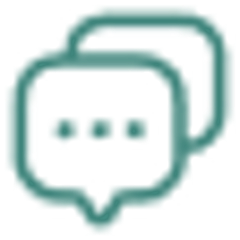

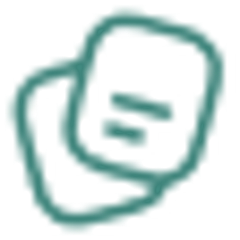
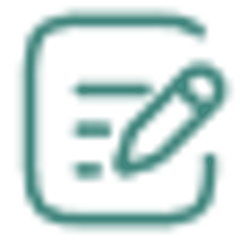

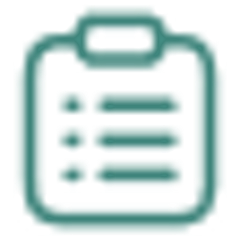
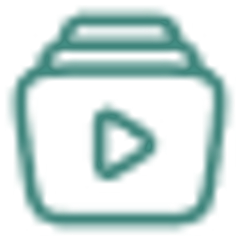
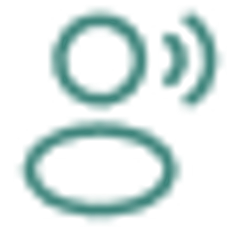
.webp)
.png)